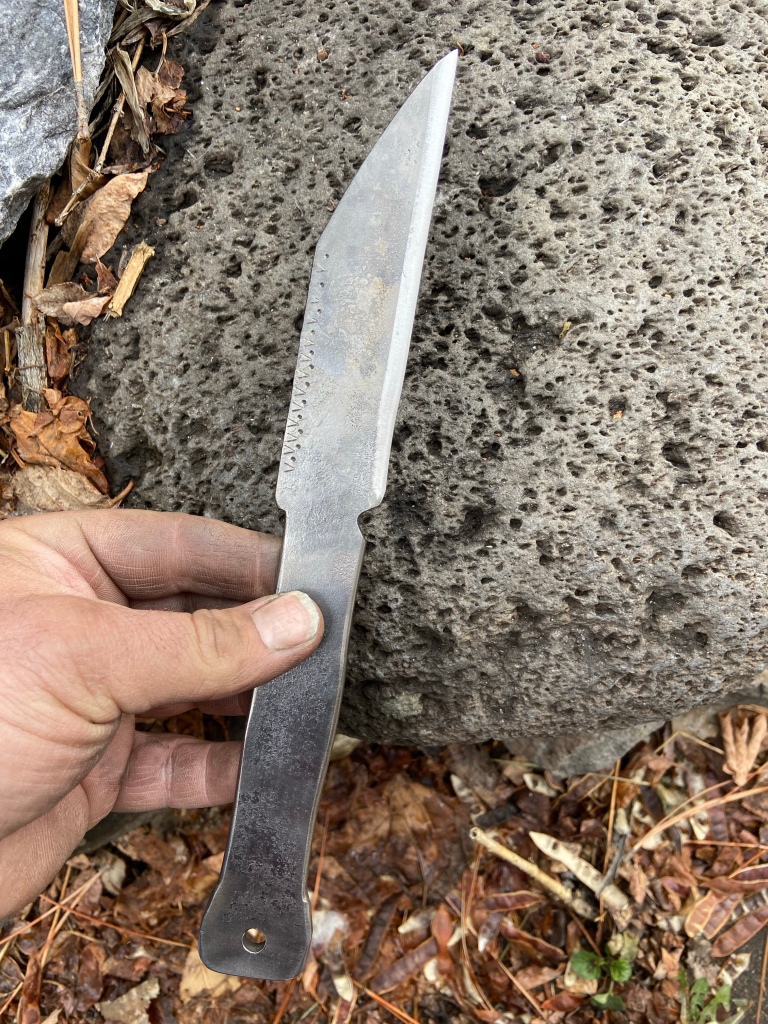Celts and Germans (Random thoughts and myth comparison)
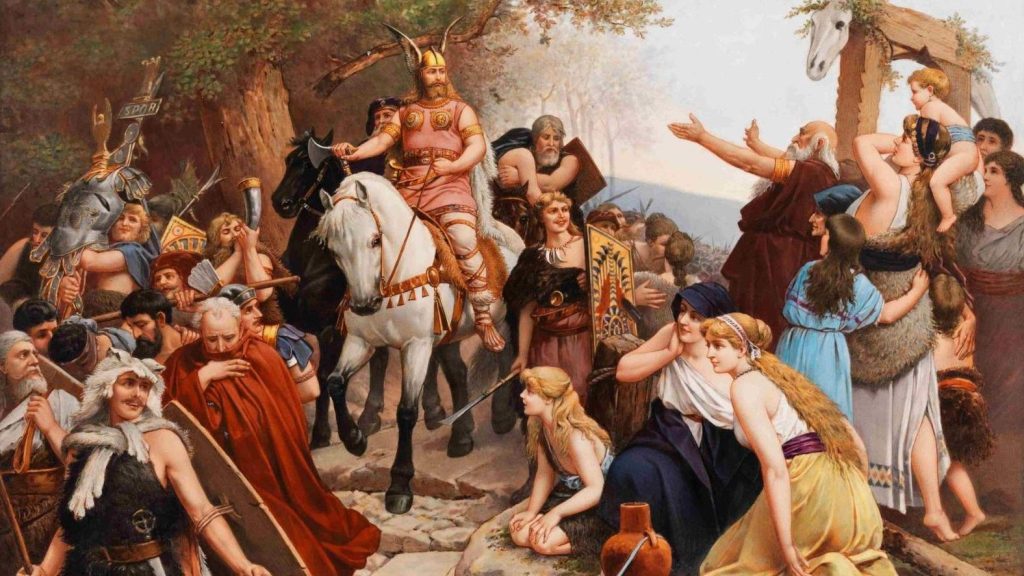
Germans, Celts, Manus, Teutates-Toutatis, Tuisto Etc.
The Celtic God Teutates is described by Roman writers as a Celtic God of War, associated or compared with both Murcury (Woden) and Mars (Tiw). It is said he was one of 3 major Gods worshiped by the Celts in Gaul and Britain (Taranis = Thor)
Esus (Ing) and Teutates (Tiew/Woden). In Tacutus’s Germania he describes the first information of Germanic tribes to be recorded: That they worship an Earth Born God called “Tuisto” or Tuisco* (*cognate to Tiw) earlier reportedly meaning “Two” or “double” and the later being possibly cognate to Tiw. Is Teutatis and Tiw (Tiwaz) somehow related? Is Tuisto in fact Teutatis and the name sake of the Tribes of which the Germans take their name (Deutsch).
Are Teutates, Taranis and Esu cognate to Woden þunor and Ing.
War, Thunder and Lord.
Celtic Sea God Manannán cognate to Germanic Manus? Manannan is described as a Tuatha Da Danan (People of Danu) a tribe of divine beings that inhabited Britain before the humans arrived. The Milesians (Celts or Scythians) then inhabited the Islands. Are the Tuatha Da Danan a reference to a Teutonic people previously inhabiting Britain? According to the Book Blood of the Isles (which did DNA surveys on Britain) found that Scotland particularly had a surprisingly high migration rate from Scandinavia during the Beaker and later bronze age.
The God Manannan has interesting comparisons to Ing or Freyr:
One:
Freyr is son of Njorð a Sea/Fertility God.
Manannan is son of Ler a Sea God
Two:
Freyr has a magic boat that fits in his pocket.
Manannan has a magic boat that guides itself.
Three:
Freyr has a magic sword which fights on its own.
Manannan has a magic Sword that steals his enemies strength.
Four:
Freyr has a magic boar he rides and is associated with horses/horse cults.
Manannan has a magic horse who rides over sea and land (Also Sleipnir like)
Both Celtic and Germanic myth describe a primordial Race of Giants being in conflict with the Gods of order. Greek myth which is also Indo European has Titans as the primordial beginning. The Germans have Ettins/Jotuns or Eotens and the Celts have
Formorians.
The Tuatha Da Danan Battled the Formorians in Celtic myth as the Vanir Battle the Æsir in Norse or Germanic although Vanir does not exist outside later Norse sources. It is unknown if the Eldest kindred of Teutons (Germans) acknowledged a difference between Gods or saw them as having tribes. Perhaps it was simply a matter of Æsir and Jotuns as the Vanir are descended from Jotuns technically. Elements of Celtic mythology appear to almost reference the settling of the Indo-Europeans across Europe and even place the Tuatha Da Danan as the northern most of these groups. (Later they are the Pagan Irish Gods).
Were the Formorians and Fir Bolg Hunter Gatheres and Neolithic Farmers?
While the Earliest Teutons share a vague Celtic attachment none are more vague than the Belgae:
The Belgae are both linked to the Cimbri and in their own words spring from the Germani a tribe who’s name later becomes a catch all for for all Germanic speaking people. Many of the Belgae names and descriptions say they are in fact Celts but signs of a true mixture of the two groups appears to be in sight. They are hostile to the Gauls but apparently can speak a form of Gaulish. The name Belgae has both Proto Celtic and Proto Germanic etymologies. It is said to mean swelling with anger or battle fury. Caesar states they are the most Brave and when he asked them of their deeds they stated that the Cimbri and Teutons failed to invade them. It is said later the Cimbri led partly to the Belgae as a people. There is inconsistency here.
The Belgae and Gauls are both said to wear winged or elaborate horned or crested helmets. The Celts wore Boar crested helmets as well did Germanic tribes. The Winged Helmet although the accuracy unknown was often attributed to the Teutonic tribes.
It should be noted the practice of Bog Sacrifice seemed to be held across Britain and Southern Scandinavia/Germany and the Nordic Bronze age shares more than a few traits also seen in the Bronze age portion of of the Hallstatt Culture which reached from its origin in Central Europe to the Balkans, Britain Germany and Netherland/Belguim/France. How far North it spread is unknown but the Gundestrup Cauldron appears to be of Balkan Celtic origin.
Sorry if this seems disjointed but it was a thought stream.
Hroð-
Dithmarschen Mjönir
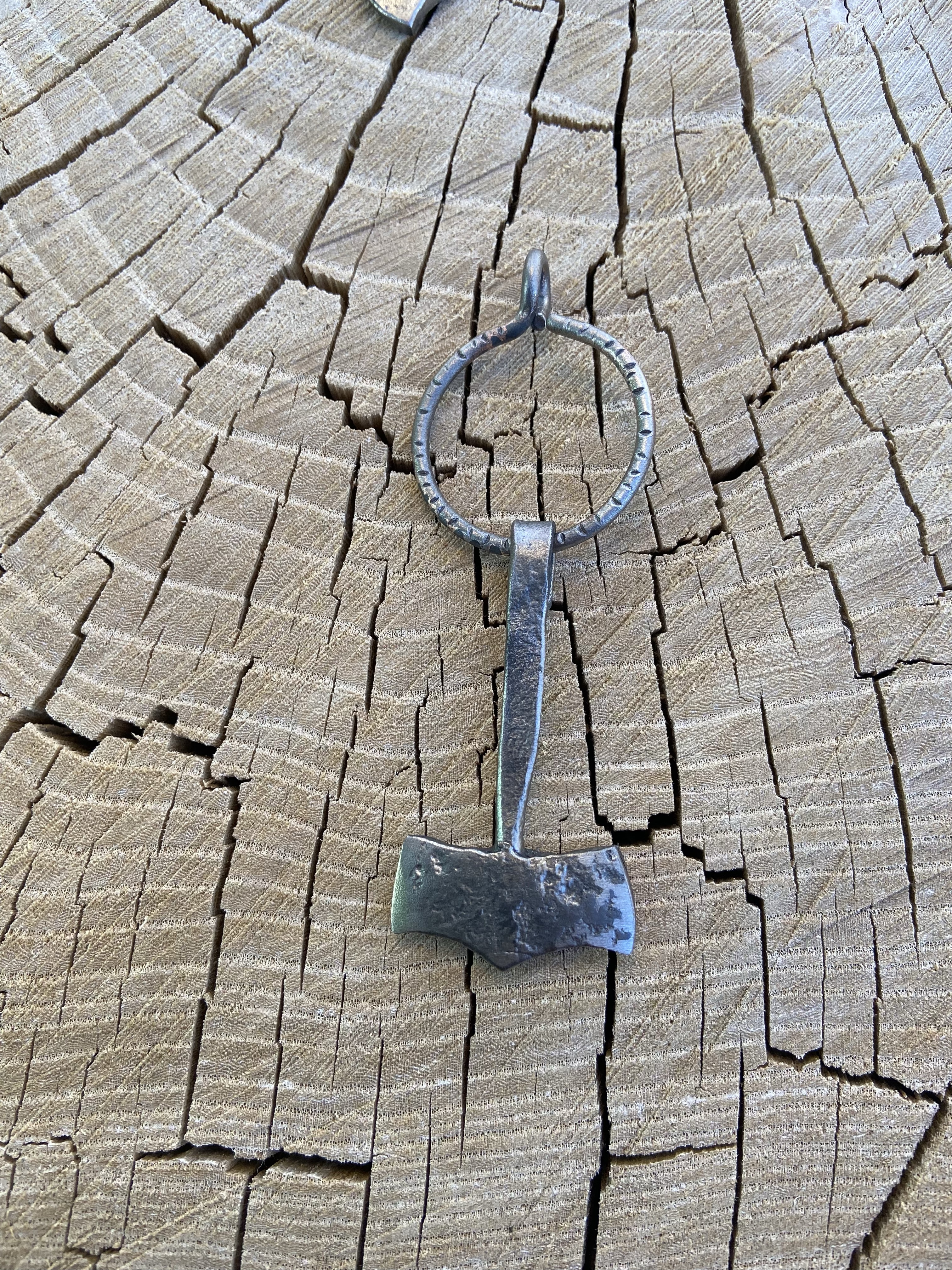
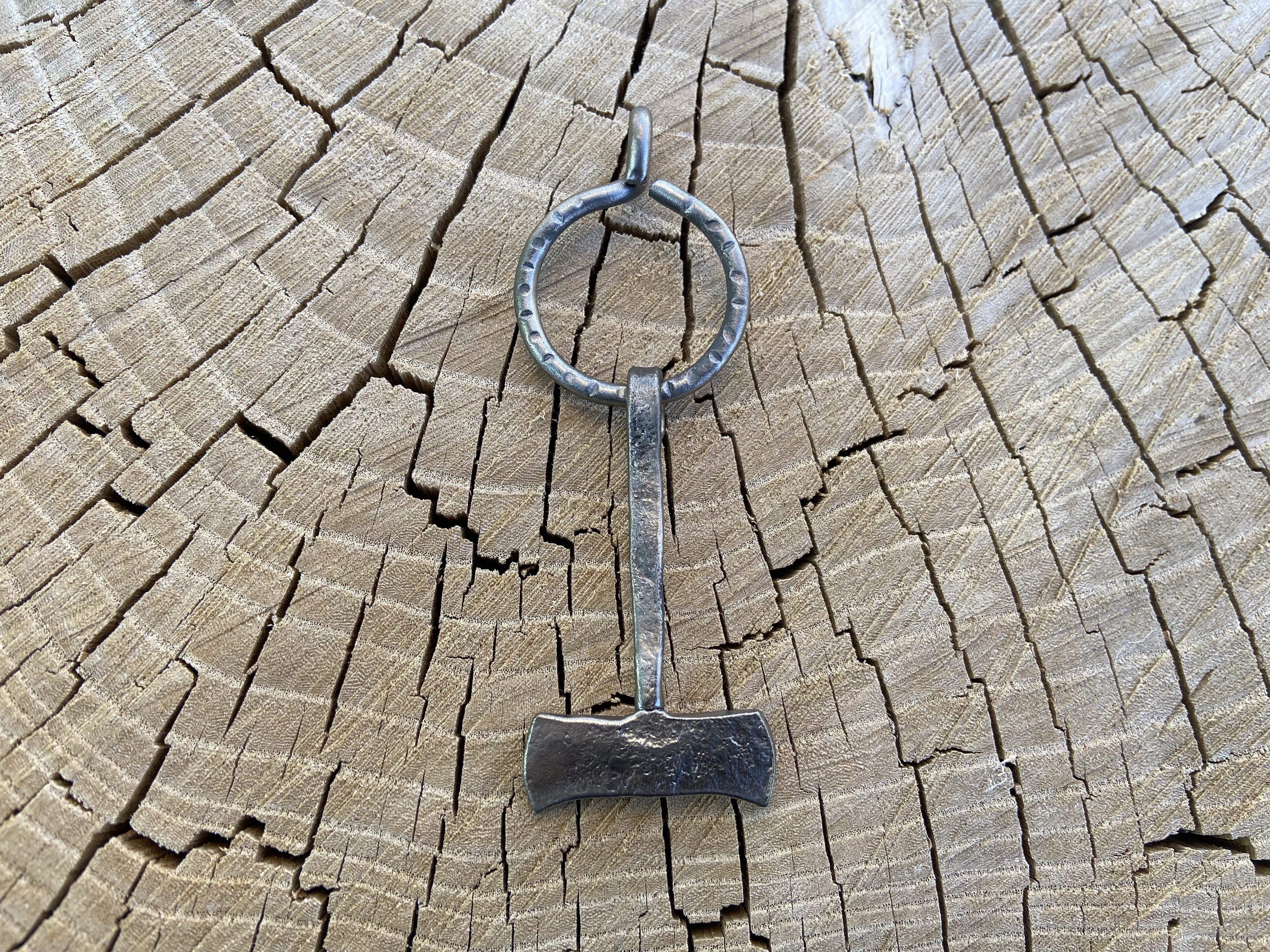
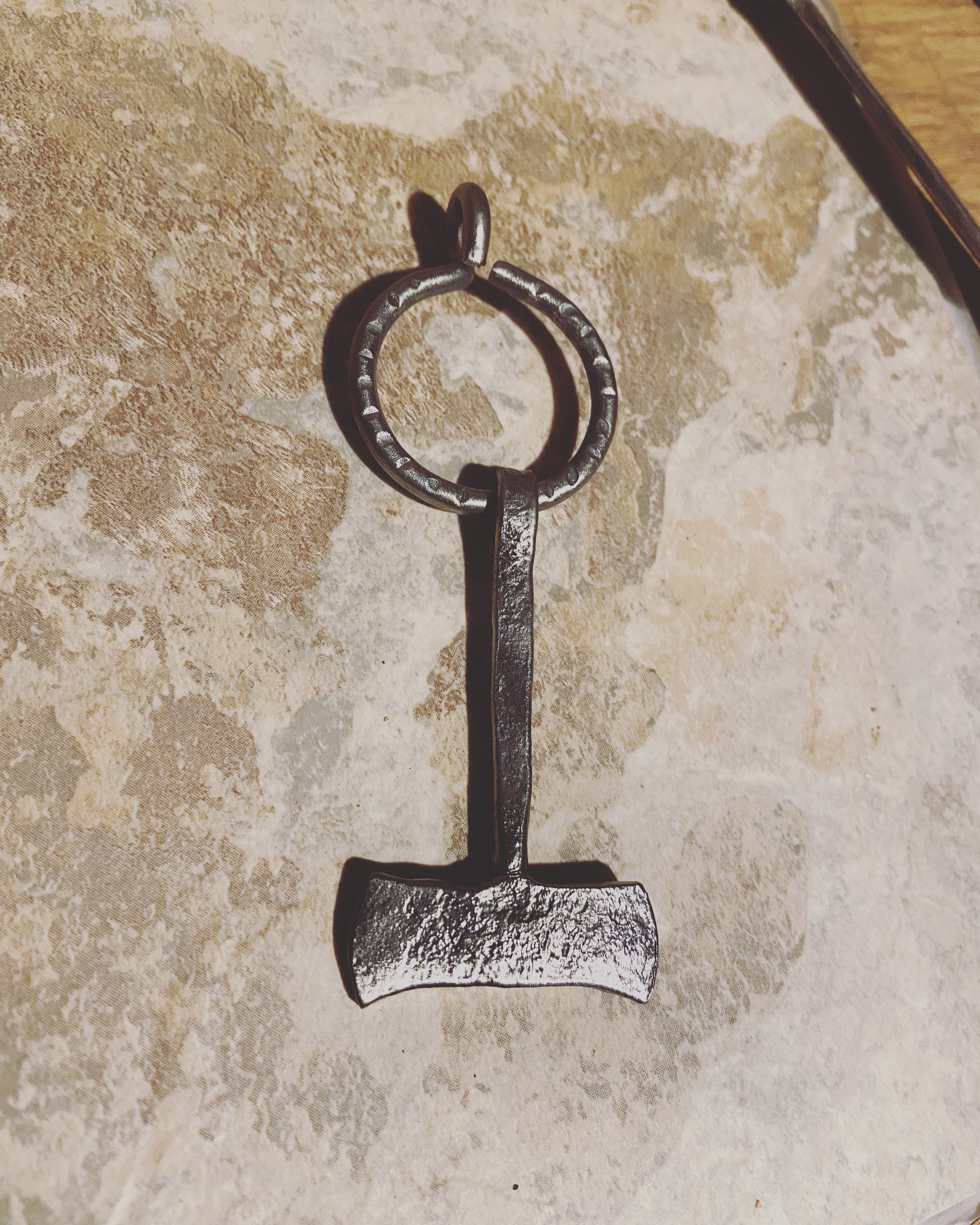
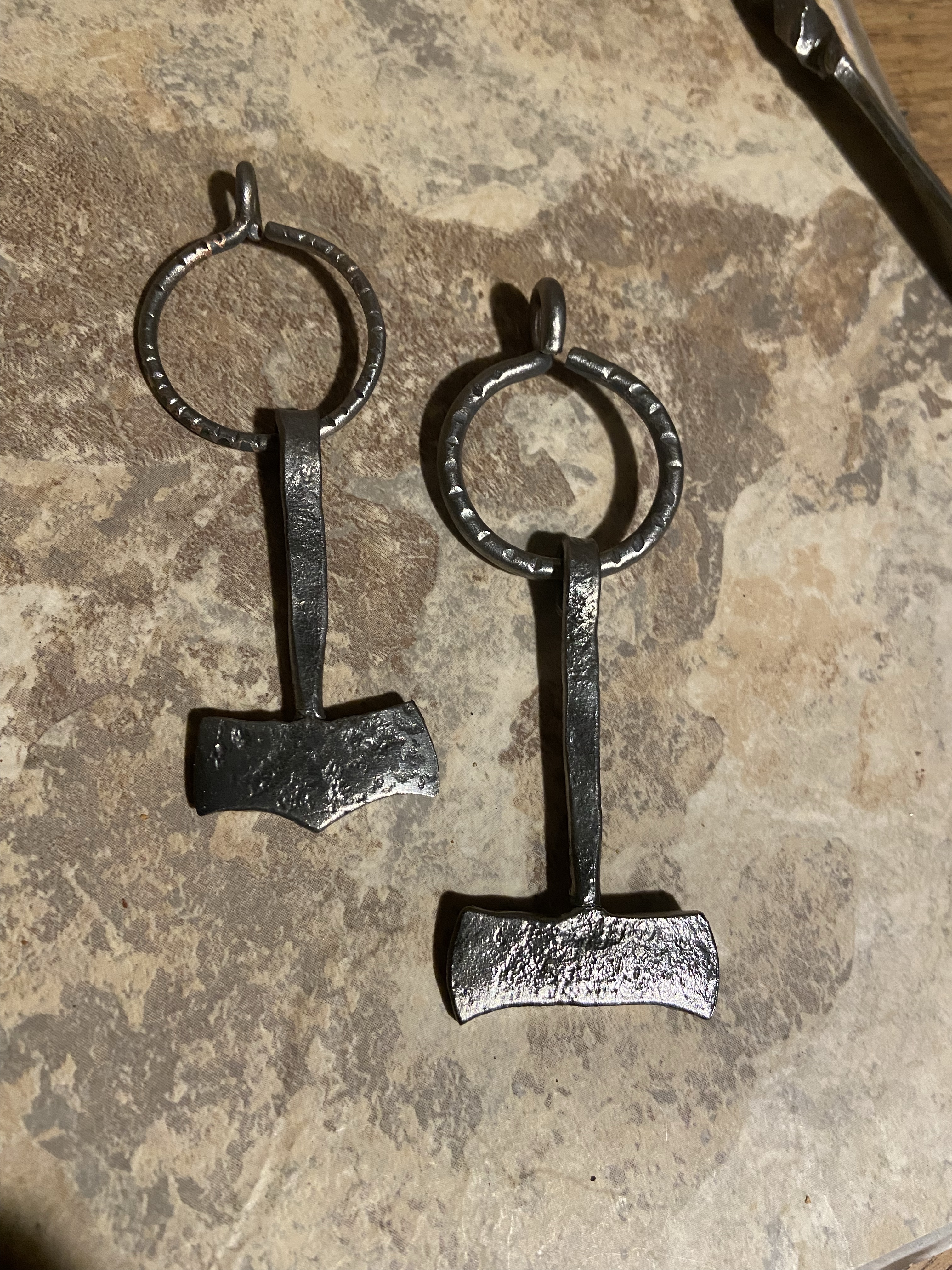
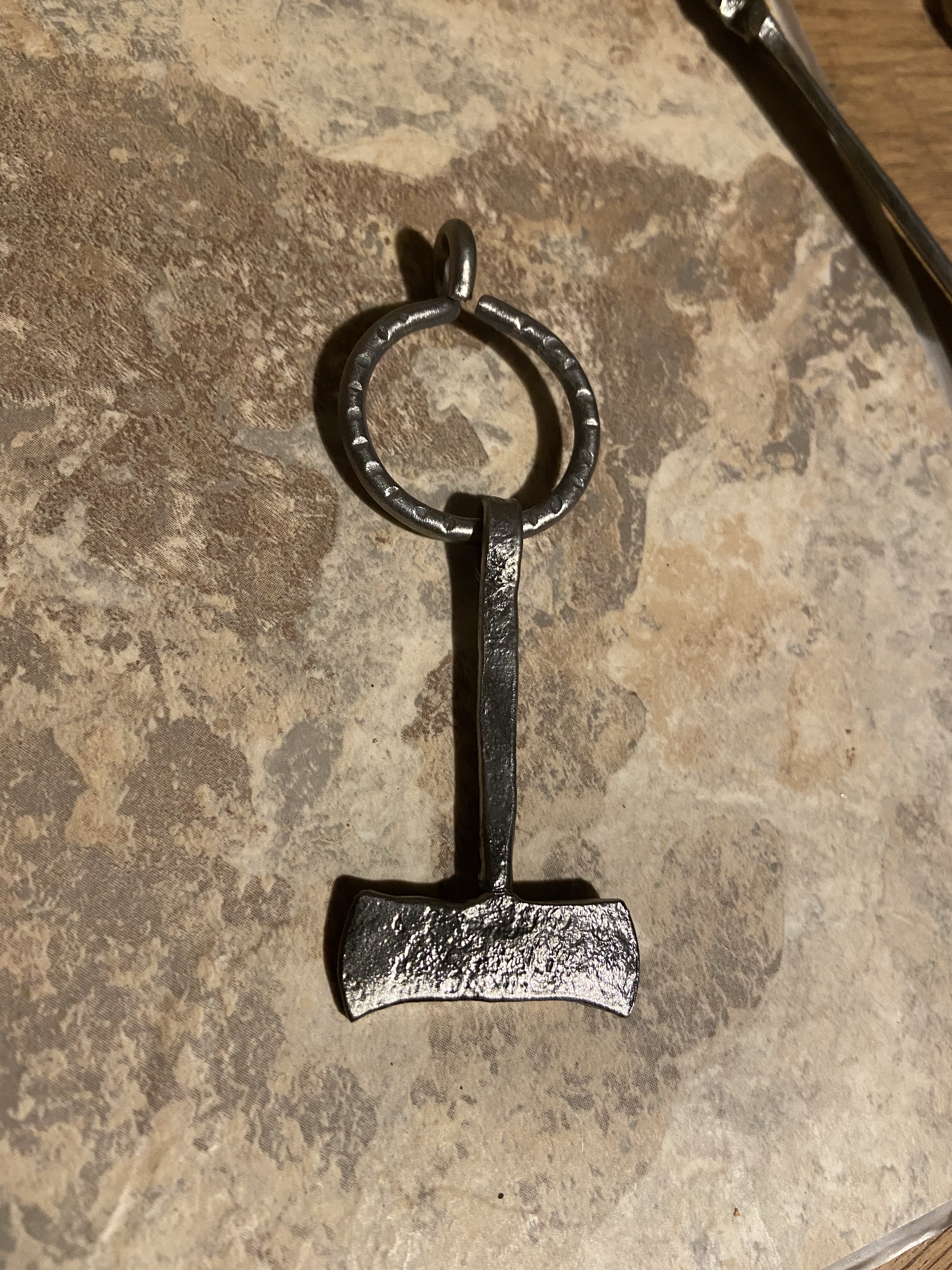
Hroð-
Etsy back up.
https://www.etsy.com/shop/NorseWest
After forever the forge is back in action. Trying to find a trip to Denmark/Germany. no customs just what is on here is available for now. Not back to knives yet. Hammer arm is a bit rusty yet.

Skål.
Hröð-
Jul

My Jul Will be between 12/21 and 1/18 so Glædelig Jul again & godt nytår.
Frohe Weihnachten und ein glückliches Neues Jahr.
Hröð-
Gruß Vom Krampus (belated)

Krampusnacht
Hroð-
Anglo Saxon grammar ideas
Anglo Saxon grammatical ideas and dative in semi poetic use:
The AS language retains the archaic Indo-European function of cases and gender as well as complicated poetic grammar that uses cases to imply words that are not actually written. In modern Germanic language only German and Icelandic retain cases and gender in any heavy use. Swedish and Danish have Common and Neuter in modern use. Danish and Old English share sometimes a visually close vocabulary but many are false friends and mean something different. AS uses cases not word order to indicate grammar and is more free in word order. This does not mean it is totally free or random in word order.
(The genders are meaningless in function in AS and only serve as a complicated archaic hold over from Proto Germanic and act as another layer of things to memorize. My interpretation from “Robert E Diamond” Old English grammar/ reader).
The following is my own writing of what I have learned.
The dative:
“Hail to the Sun”
The sun is receiving the call so it is singular dative.
I am the one hailing so I am in nominative.
Hælu Þære Sunnan (hail the sun) “to” is implied when using the dative and technically so is “the” so you could write it “Hælu Sunnan” and “ to the” ís implied and would be understood as such. The ending “an” on the Goddess name Sunne denotes a weak declension of the feminine noun. “Þære” ís the feminine dative form of “the” the nominative (f) form of the is “Seo”. Male Form(n) “Se” which is close to PG and PIE sources.
To add a personal emphasis I could add “Ic”
“Ic Hælu Þære Sunnan”
“I hail the sun”
As you can see Ic is cognate to German Ich.
When using articles (words like “the”) the article must match the gender of the word and the articles case must match the case being used. Dative with dative etc…
Example: masculine:
Se (nom) Hund (nom)
“The Dog” the dog is the subject so it is nominative as is “the”
Se Hundas (Nom/Plural)
“The dogs” plural
Þæs Hundes bān (Genitive)
“The dog’s bone”
(Accusative uses the same word endings as nominative) but uses several different articles depending on gender such as “þone”. The ACC case is used to denote the object being given such as above “bān”. In the modern sentence “I gave the dog a treat” the “treat” is accusative the dog is singular dative. The accusative is also used to indicate movement of something in a sentence such as running, riding, charging etc..
The dative case has the most uses and is the most complicated.
Dative:
“To the Hall” as in a toast
Sæle (neut) (tó the hall) poetic
“To the halls” “ (of our forebears) plural toast
Sælum (neut) dative plural “ to the” ís implied.
Sæl is the origin of the Word Saloon and Salon. Modern Danish “Sal” as in Mjødsal (Mead hall) Old English “Medusæl”
All cases and genders have a version of the word “the” and some are shared. Cases have some of the following endings: ( not complete or exhaustive)
E
A
es
as
U
an
Some case endings on certain words have no end vowel or sometimes use a double from another such as sometimes genitive ending E or Nominative ending in A.
This level of complexity leaves the student with need of complex tables showing all gender forms, articles by case and gender as well as all singular and plural forms of words. Wiktionary and and a good word hoard book goes a long way.
Notes:
Anglo Saxon is a Norð Sea Germamic or Ingveonic language that originated in Jutland and Southern Scandinavia. Old English, English, Old Saxon, Low German, Old Frisian and Frisian are all within the Ingveonic family. Some speculate the Teutons were also Ingveonic due to their southern Scandinavian origin. These languages sit somewhere between Scandinavian and West Germanic languages.
I use Peter S. Baker, Robert E Diamond and Stephen Pollington, K Herbert resources as well Thijs Porck videos and wiktionary declension tables.
Skål 🍻 some of this might not correct but it’s as far as I have gotten.
Hroð-
Anglo Saxon word of the day: acweorna
Anglo Saxon word of the day:
ācweorna (squirrel)
The first denotes “oak” the second element “weorna “ denotes squirrel.
Proto-West Germanic: *aikwernō
Old English: ācweorna
Middle English: acquerne
Old Frisian: *ēkworna, *ēkhorna
Saterland Frisian: *Eeker (in Kateeker ?)
West Frisian: iikhoarn, iikhoarntsje
Old Saxon: *ēkhorno
Middle Low German: êkhōrn, êkhōrne, eikhōrne, êkhorn, êkōrn, eikōrn, êkōrne, echhorne
⇒ Dutch Low Saxon: Eekhoorntje
German Low German: Ekkern
Westphalian:
Ravensbergisch: Aik, Aikern
Sauerländisch: Ēksken, Aikerte
⇒ German Low German: Eekhoorntje
Old Dutch: *ēcorno
Middle Dutch: êencōren
Dutch: eekhoorn
Old High German: eihhorno, eihhurno
Middle High German: eichurne
Alemannic German: Eichhore
German: Eichhorn
⇒ German: Eichhörnchen
⇒ Hunsrik: Eichhernche
Old Norse: íkorni
Icelandic: íkorni
Faroese: íkorni
Norwegian:
Norwegian Bokmål: ekorn
Norwegian Nynorsk: ekorn, ikorn
Old Swedish: ēkorne, īkorne
Swedish: ekorre, (dialectal) ikorn
Old Danish: īkærnæ
Danish: egern
Westrobothnian: ickȯrn, ikårn, ikkårn
Elfdalian: aikuonn
Jamtish: íkuðn
Gutnish: eikånn
Scanian: igarne
Bonus:
maniġfeald (manifold, many fold, of many parts)
Old English: maniġfeald, mæniġfeald
Middle English: manifald, monifald, manyfold, manifold
English: manifold, manyfold
Old Frisian: manichfald
Old Saxon: managfald
Old Dutch: *manigfald
Middle Dutch: menichvout
Dutch: menigvoud, menigvoudig
Old High German: manicfalt, manicfaltīg
Middle High German: manecvalt, manecvaltec
German: mannigfaltig
Old Norse: margfaldr
Icelandic: margfaldur
Norwegian: mangfoldig
Old Swedish: mangfalder
Swedish: mångfald, mångfaldig
Danish: mangefold
Gutnish: manggfaldur
Gothic: 𐌼𐌰𐌽𐌰𐌲𐍆𐌰𐌻𐌸𐍃 (managfalþs)
Hröð-
Anglo Saxon word of the day: Preowthwil
Anglo Saxon word of the day:
prēowthwīl (to blink) (the time it takes to blink)
Bonus 1:
Hagosteald (an unmarried warrior of royal descent) (bachelor)( liegeman) (owner or one who lives on fenced land of their family) sometimes acts as a personal name. Alternate:Hægsteald.
Old English: hæġsteald, hagulstead, hagosteald
⇒ Old English: Hagustealdesēa
⇒ Old English: Hagustealdeshām
English: Hexham
Middle English: hassel, haselle
Old Saxon: hagalstad
Old High German: hagalstalt, hagastolt
Old Norse: haukstalda
Bonus 2:
wīġbǣre (warlike) (eager for battle)
Hroð-
Anglo Saxon word of the day: Tirgan.
Anglo Saxon word of þe dæg:
Tirġan (ᛏᛁᚱᚷᚨᚾ) ( to provoke, pain, irritate)
Old English: tergan, tiergan, tyrgan, tirgan, tirian; tierwan
Middle English: terien, tarien, taryen; terȝen
Scots: tarrow
English: tarry
Old Frisian: *tergia
West Frisian: tergje
Old Saxon: *targian, *tergian
Middle Low German: tergen, targen
→ Danish: tærge
→ Norwegian: terge
→ Swedish: targa
Old Dutch: *tergen
Middle Dutch: tergen, terghen
Dutch: tergen
Old High German: *zergen
Middle High German: zergen
German: zergen
Bonus:
Torht ( to shine, brightness)
Old English: torht
Middle English: torhte, tohte
Old Saxon: torht, toroht
Old High German: zorht, zoraht, zorft
Hroð-
Anglo Saxon word of the day: Uhta
Anglo Saxon word of þe dæg:
ūhta (pre dawn) (last part of night)
Old English: ūht (< *unhtwaz), ūhta (< *unhtwô)
Middle English: *uht (found in compound uhtsang, uhtsong); Middle English: uhhtenn, uȝten, ughten, oughten (< Old English ūhtan, oblique form)
Old Saxon: ūhta
Middle Low German: uchte
German Low German: Uchte, Ucht
→ German: Uchte (“midnight mass”) (regional)
Old Dutch: *ūhto
Middle Dutch: uchte, ochte (various forms are attested, including nuchte through rebracketing, uchten/ochten from the case forms, and rarely uchtent/ochtent from the previous by analogy with avont (“evening”))
Dutch: ochtend
Old High German: uohta (irregular); *ūhta
Middle High German: uohte, ūhte (both rare)
German: Ucht, Aucht (both only in placenames and compounds)
Old Norse: ótta
Icelandic: ótta
Norwegian Bokmål: otte
Westrobothnian: ótt’
Old Swedish: ōtta, ōta
Swedish: otte, otta
Danish: otte
Gothic: 𐌿𐌷𐍄𐍅𐍉 (ūhtwō)
Bonus:
Lagustrǣt (ocean) literally “Water-road”.
Old English: strǣt, strēt
Middle English: strete, streete, stret, strate, street, stræt
English: street
Scots: street, streit, stret
→ Breton: straed
→ Cornish: stret
→ Welsh: stryd
→ Old Irish: sráit (see there for further descendants)
→ Old Norse: stræti (see there for further descendants)
Old Frisian: strēte
North Frisian:
Föhr-Amrum: struat
Mooring: stroote
Saterland Frisian: Sträite
West Frisian: strjitte
Old Saxon: strāta
Middle Low German: strâte
German Low German: Straat, Stroot
Old Dutch: strāta
Middle Dutch: strâte
Dutch: straat (see there for further descendants)
Limburgish: sjtraot, straot
Old High German: strāza
Middle High German: strāze
Alemannic German:
Swabian: Schdrôs
Bavarian: Stråßn, Strossn
Apeltonerisch: Streoss
Mòcheno: stros
Upper Bavarian: Straß
Central Franconian: Stroß
Eifel: Strooß
Hunsrik: Stros
Luxembourgish: Strooss
German: Straße
Rhine Franconian: Schdrooß
And
West Germanic: *lagu
Old English: lagu, lago
Middle English: laȝe, lawe, laie, leye
English: lay
Old Saxon: lagu
Old Norse: lǫgr
Icelandic: lögur
Faroese: løgur
Norwegian Nynorsk: log
Norwegian Bokmål: låg
Old Swedish: lagher
Swedish: lag
Old Danish: low, lou
→ Scots: lyog
Gothic: *𐌻𐌰𐌲𐌿𐍃 (*lagus) (> 𐌻𐌰𐌰𐌶 (laaz))
Hroð-
Book of the month (June)

Hilda Roderick Ellis Davidson is quickly becoming a favorite author of mine. Great detail and everything kept in context. I do love comparatives though I am biased.
Hrøð-
Anglo Saxon Ƿordes of þæs Dæġ: Græs
Anglo Saxon word of þe dæg:
ᚪᚾᚷᛚᚩ ᛋᚪᛉᚩᚾ ᚹᚩᚱᛞ ᚩᚠ ᚦᛖ ᛞᚫᚷ᛫
Græs (grass) from Proto Germanic “grasą”. ᚷᚱᚫᛋ᛫
Compare:
West Germanic: *gras
Old English: græs, gærs
Middle English: gras, grasse, gresse, gres, gers, grece, græs, grace, gars, grys, grisse, grese
English: grass
Scots: gress, gres, grais, graiss, grase, gers, girs
Old Frisian: gers, gres
North Frisian:
Föhr-Amrum: gäärs
Sylt: Gērs
Saterland Frisian: Gäärs
West Frisian: gers, gjers, jers
Old Saxon: gras
Middle Low German: gras
Dutch Low Saxon: gras
German Low German: Gras
Plautdietsch: Grauss
Old Dutch: *gras
Middle Dutch: gras, gars, gers
Dutch: gras
Limburgish: graas
West Flemish: ges, gas
Zealandic: gos
Old High German: gras
Middle High German: gras
Alemannic German:
Italian Walser: gras, gros
Cimbrian: gras, grass
Udinese: gròs, gros, groos
Hunsrik: Graas
German: Gras
Luxembourgish: Gras
Pennsylvania German: Graas
Vilamovian: gros
Old Norse: gras
Icelandic: gras
Faroese: gras
Norwegian:
Bokmål: gress (< *grasja-)
Norwegian Nynorsk: gras
Old Swedish: græs, gras (hapax legomena)
Swedish: gräs (< *grasja-)
Danish: græs (< *grasja-)
Elfdalian: gras
Gutnish: gras
Gothic: 𐌲𐍂𐌰𐍃 (gras)
————-
Bonus:
Weder (weather) from Proto Germanic “wedra” ᚹᛖᛞᛖᚱ᛫
Example:
Þæt weder tōdæġ biþ hāt and drȳġe.
The weather today will be hot and dry.
Hū is þæt weder þǣr þū eart?
What’s the weather like where you are?
On Īra lande ne mæġ man þæt weder nǣfre forecweðan.
You can never predict the weather in Ireland.
Iċ hine ǣrest ġeseah on þæs ġēares anġinne. Iċ wāt for þon hit wæs ċeald weder, swīðe ċeald on þā tīd.
I first saw him at the beginning of the year. I know because it was cold weather, very cold at the time.
Compare:
Old English: weder
Middle English: weder, wethyr
English: weather
Scots: weddir, wethir, wathir
Old Frisian: weder, wedder
Saterland Frisian: Weeder
West Frisian: waar
Old Saxon: wedar
German Low German: Weder
Old Dutch: wedar
Dutch: weder, weer
Afrikaans: weer
Old High German: wetar, *wedar
Middle High German: weter (classical), wetter (late), weder (Central German)
Alemannic German: Wätter
Bavarian: Wetta
Austrian: Weda
Cimbrian: bèttar
Mòcheno: [Term?]
Central Franconian: Wedder, Wäder, Weader, Wäer
Hunsrik: Wetter
Luxembourgish: Wieder
Transylvanian Saxon: Wadder, Wodder
Upper Saxon: Wättr
German: Wetter
Pennsylvania German: Wedder
Old Norse: veðr, -viðri
Icelandic: veður
Faroese: veður
Norwegian:
Norwegian Bokmål: vær
Norwegian Nynorsk: vêr
Old Swedish: væþer
Swedish: väder
Old Danish: wæthær
Danish: vejr
Elfdalian: weðer
Gutnish: vädar
Scanian: væðer
Westrobothnian: ver, vider-
Celto-Germanic Book List (Non fiction)
Here is a few recommendations of books I have enjoyed over the years or am currently reading.
(I am not responsible for antiquated views or pseudo history in these books but I believe they still may contain interesting information or images)
)))))))Some books may be difficult to find(((((((
The Early Germans By Malcolm Todd.
Rise of the Celts by Henry Hubert.
The Goths by Peter Heather.
Norsemen of the Viking age by Christiansen
The Anglo Saxon Mead Hall by Stephen Pollington.
Aspects of Anglo Saxon Magic by Bill Griffith.
The German Folklore Handbook by James R. Dow.
Hallstatt 7000 by Kern/Lammerhuber.
Bronze age Metal work by Heide W. Nørgaard
Time life books The Celts: Europe’s people of Iron.
The Mound People by P.V. Glob
The Bog People by P.V. Glob
The Celts: Conquerers of Europe by Mohen/Eluere (Abrams Discoveries series)
The Bronze Age in Europe by Eluere (Abrams discoveries series)
The Pictish Guide by Elizabeth Sutherland.
All Osprey “warrior” illustrated books on Norther Europe.
The Northern World by Abrams Publishing.
Stephen Pollingtons wordcraft Old English dictionary.
Old English Grammar/Reader by Robert E. Diamond.
Introduction to Old English BY Peter S. Baker.
The World Guide to Gnomes, Fairies, Elves, And Other Little People by Thomas Keightley.
Norwegian Troll Tales by Joanne Asala.
Swedish Folk Tales and Legend by Blecher/Blecher.
Scandinavian Folk Belief and Legend by Kvideland/Sehmsdorfs.
Th Vikings by Else Roesdahl.
Looking for the lost Gods of England by Kathleen Herbert.
Hippocrene Beginner Language books with Audio Cd’s.
The Complete Grimms Fairy Tales by The Brothers Grimm.
Teutonic Mythology by Jacob Grimm.
Elves Wights and Trolls by Kveldulf Gundarsson.

Photo from the web. Credit unknown.
Enjoy!
Hroðbeorht-
First strike 2020

Hammer strike that is.
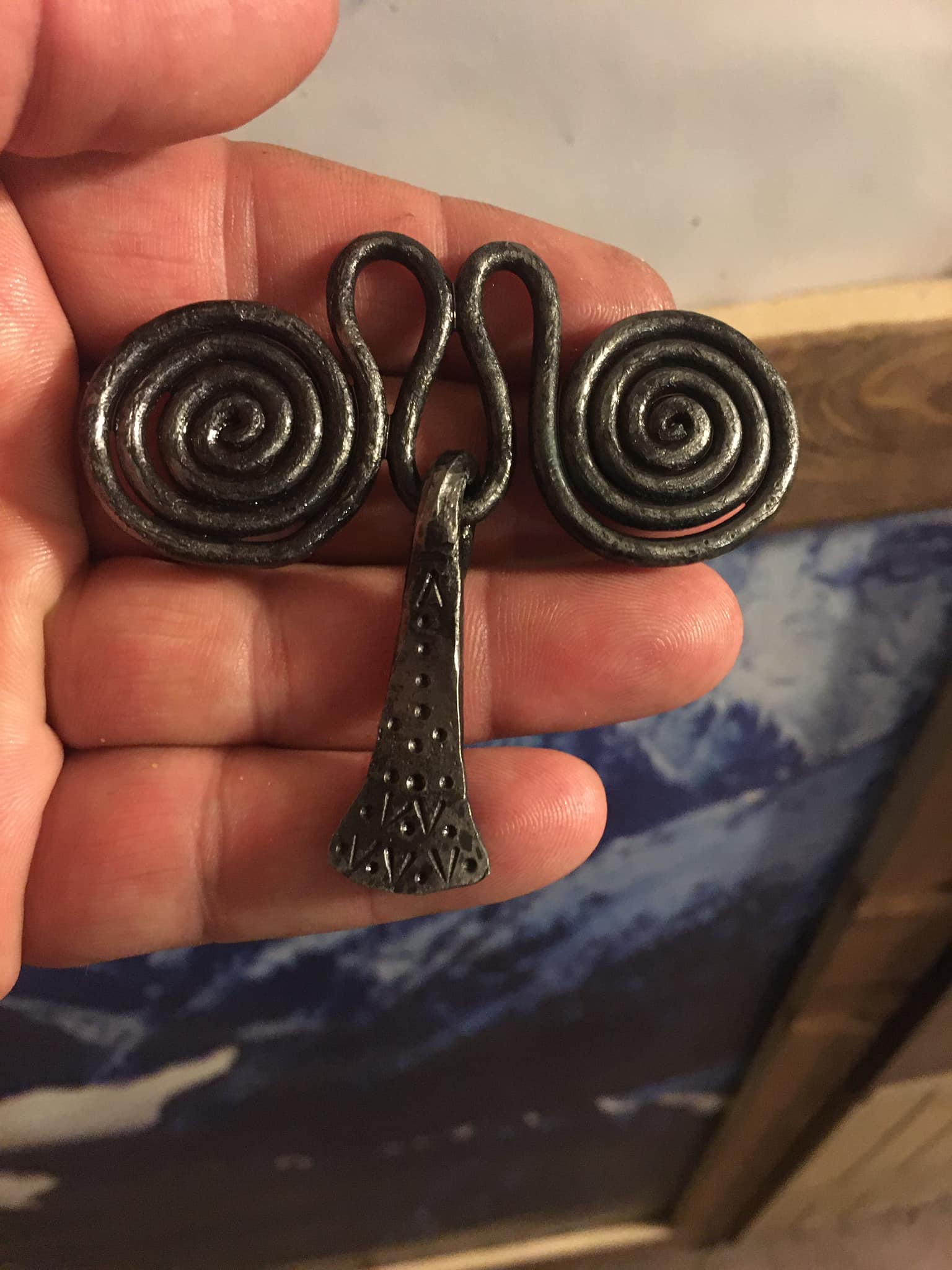
First forging since 2018. This amulet is inspired by a variety of sources, Primarily Hallstatt style spiral brooches but also Bronze age Axe cultures across Central and North Eastern Europe. The Axe could represent any of the Axe wielding Thunder Gods from Perkuns, þunar or Perun.
Forged Iron.
Hroðberht-
Rune of þē dæġ (Ur)
Rūne of þē dæġ:
ᚱᚢᚾᛖ ᛟᚠ ᛏᚺᛖ ᛞᚨᚷ᛬
“ᚢ” Ur (Uruz) The Aurochs ( Wild Northern European Cattle)
Strength-Power-Promotion.
Anglo Saxon Rune Poem:
ᚢ Ur byþ anmod ond oferhyrned,
felafrecne deor, feohteþ mid hornum
mære morstapa; þæt is modig ƿuh
Translation:
The aurochs is proud and has great horns;
it is a very savage beast and fights with its horns;
a great ranger of the moors, it is a creature of mettle.

ᚺᚱᛟᚦᛒᛖᚱᚺᛏ-
Rune of þē dæġ (Thorn)
Rune of þē dæġ:
ᚦ (Thorn-þorn) (Protection, Injury, Ettin)
Thorn is most associated with þor or þunar and can be both offensively harmful or highly protective. It is the modern sound “TH” like THAT,THE,THOR. Interestingly Icelandic and English are the few Germanic languages to continue using the consonant cluster TH to make the hard THORN sound or soft ETH sound.
þ ð both Runes make a TH sound.
Anglo Saxon Poem:
ᚦ Ðorn byþ ðearle scearp;
ðegna gehƿylcum anfeng ys yfyl,
ungemetum reþe manna gehƿelcum,
ðe him mid resteð.
The thorn is exceedingly sharp,
an evil thing for any thegn to touch,
uncommonly severe on all who sit among them.
ᚺᚱᛟᚦᛒᛖᚱᚺᛏ-
Anglo Saxon ƿord of þē dæġ: Lacu
Anglo-Saxon word of þe dæg:
ᚪᚾᚷᛚᚩ ᛋᚪᛉᚩᚾ ᚹᚩᚱᛞ ᚩᚠ ᚦᛖ ᛞᚫᚷ᛫
Lacu (lake, Pond, watercourse) from Proto Germanic „Lako“ ᛚᚨᚳᚢ.
Also: Lagu (lake, sea, water) Rune (Lagu ᛚ)
ᛚᚪᚷᚢ᛫
Compare:
West Germanic: *laku
Old English: lacu
Middle English: lake
Scots: lake
English: lake
Old Saxon: laca (in placenames)
Middle Low German: lāke
German: Lake
German Low German: Lake, Laak
Old Dutch: *laka
Middle Dutch: lāke
Dutch: laak
Old High German: lacha, *lahha
Middle High German: lache
German: Lache, Lacke
Luxembourgish: Laach
———————-
Bonus:
Feohton (fight, strive, struggle) from Proto Germanic “fehtaną”. ᚪᛖᚩᚻᛏᚩᚾ.
Also: Beadu (battle)
Also: Guþ (battle)
Compare:
West Germanic: *fehtan
Old English: feohtan
Middle English: fighten, fehten, feghten, feighten, fihhtenn, fiȝten
Scots: fecht, ficht
English: fight
Old Frisian: fiuchta, fiuhta
Saterland Frisian: fjuchte
West Frisian: fjochtsje, fjuchte
Old Saxon: fehtan
Middle Low German: vechten
Low German: fechten
Danish: fegte, fægte
Norwegian: fekte
Saterland Frisian: fächtje
Swedish: fäkta
Old Dutch: fehtan
Middle Dutch: vechten
Dutch: vechten
Afrikaans: veg
Limburgish: vèchte
West Flemish: vichten
Old High German: fehtan
Middle High German: vëhten
Alemannic German: fëchte
German: fechten
……………………
ᚺᚱᛟᚦᛒᛖᚱᚺᛏ-
Who are the Norse People Part 2 (Germanic Culture)

Rising out of Scandinavia/Jutland the Germanic tribes brought great change to a world largely dominated by Celtic and Roman civilization. They brought with them some of the finest metal work, art, poetry and one of most well attested mythological cosmologies that is still effecting our world today. Sit back, relax and lets take a second look at the Norse (Germanic) people .
The Beginning:
Stone Age Scandinavia.
Ahrensburg Culture (c. 12,900 to 11,700 BP)

>>>>>>>>>>>>>>>>>
Fosna–Hensbacka Culture (Hunter Gatherer)
>>>>>>>>>>>>>>>>>>>>>>>>>>>>>>>
Komsa culture (Hunter Gatherer)
>>>>>>>>>>>>>>>>>>>>>>>>

Swidarian Culture. (10,000 BP)
<<<<<<<<<<<<<<<<<<<<<<<<<<

Maglemosian Culture(Hunter Gatherer)
>>>>>>>>>>>>>>>>>>>>>>>

Kongemose Culture (Hunter Gatherers)
>>>>>>>>>>>>>>>>>>>>>>>>>>>>>

Ertebølle Culture (Hunter Gatherer)
>>>>>>>>>>>>>>>>>
Pitted Ware Culture Scandinavia.
>>>>>>>>>>>>>>>>>>>>>>

Funnel Beaker Culture.
>>>>>>>>>>>>>>>>>>>>>>>>>>>>>>>>>>>>>>>>>>>>>>>>>>>>>>>>>>>>>>>>>>>>>>>>
Bronze Age Germany/Scandinavia/Poland and East/Central Europe.

Corded Ware Culture.
>>>>>>>>>>>>>>>>>>>>>>>>>>

Beaker Culture.
>>>>>>>>>>>>>>>>>>>>>

Unetice Culture. Figures (4)
>>>>>>>>>>>>>>

Urnfield Culture.
>>>>>>>>>>>>>

Nordic Bronze Age.
))))))))))))))))))))))))))))))))))))(((((((((((((((((((((((((((((((((
Early Iron Age:

Wielbark Culture Poland.
Gotland (Green)
Gotland Island (Pink)
Wielbark Culture (Goths) (Red)
……………………….


House Urns Culture (7th century BC ) (Bright Green)
Przeworsk Culture. Could be associated with the Vandalic groups but also Early Slavic tribes and was likely a culture somewhere in between these two expanding peoples.

Oksywie Culture: (Brown) A culture with possible ties to the Przeworsk culture. It is associated within the Germanic sphere of of expansion but also shows elements of La Tène and Przeworsk.

Pomeranian Culture (Pea Green)
Pomeranian Culture: Showing La Tène influence and a unique pottery style. This culture is located withing the geographic area of other early possible Germanic groups.
Cultures with foggy or debatable cultural connections or possible Germano-Celtic cultures. It has also been suggested that the “Nordwestblock” may have some undetermined influences.
The above cultures are some of the pre-historic hunter gatherer groups in Scandinavia, Poland, Germany, Baltic Coast and Central Europe. These groups undoubtedly had influence on the development of Germanic culture however some of these groups also may contributed to Balt, Slav and Celtic among others as well. In conclusion this does not mean direct exclusive development as this is largely attributed to Indo-European culture moving into contact with the earlier Hunter Gatherer cultures present at that time.
>>>>>>>>>>>>>>>>>>>>>>>>

The expansion of the Germanic tribes 750 BC – AD 1 .

Nordic (Green) Jutland/Scandinavia.
Jastorf Culture (Red) Associated with the larger Urnfield cultural practices and Nordic Bronze Age traditions.

Vandalic Migration.

North Sea Germanic (Ingvaeonic) (Red)
Weser-Rhine Germanic, (Istvaeonic) (Gold)
Elbe Germanic (Irminonic) (Yellow)
East Germanic (Green)












Sutton Hoo Ship Burial. Site Contained Vendel and Anglo-Saxon Grave Goods.
Stone Ships, Circles and Dolmens associated with Germanic Cultures from around Continental Europe and Scandinavia.

Stone Ships on Gotland Island.
Funnelbeaker Graves (Germany/Scandinavia)
Tumulus:
England, Norway, Denmark, Gamla Uppsala.


Baalberge Culture Grave (Early Funnel Beaker culture) and associated Pottery.
Pottery:

Funnelbeaker era.
Corded Ware.

Sutton Hoo.

Bell Beaker Germany.
Rune Stones, Picture Stones and Glyphs (Bronze Age to Viking age)
Metallurgy:
Jewelry and Ornamentation :
Continental Iron Age.
Viking.

Visgothic.

Lombardic.

Lombardic.

Central Germanic.
Mjollnir (Thors Hammer)

Merovingian.

Simple Mjollnir.

Poland roughly 9000-10,000 years old. Mjollnir?
Cast Mjollnir and Anglo Saxon Mjollnir.
>>>>>>>>>>>>>>>>>>>>>>>>>>>>>>>>>>>>>>>>
Swords, Helmets, Armour:

Vendel Helm.
The weaponry shown above represents the mass variety of pieces from stone age to iron age across Scandinavia, Germanic Europe, Poland, Baltic lands and Alps.
The People:
The Gods:

Odin-Wotan-Woden-Gautr-Fimbultyr-Sigföðr-Allfather-Siggautr
All Father, Sky Father, God of victory, poetry, ecstasy and God of Witches and Sorcerers. Wisest among all Gods (Though Frikka knows more). He is ruler of Asgard and the one who reached into Ginnungagap as he hung from Yggdrasil and claimed the Runes.
https://en.wikipedia.org/wiki/List_of_names_of_Odin
A list of Odin’s various names.

Freyja-Frigg-Frigga-Frikka
(My opinion) is Frigga/Freyja are the same Goddess and the difference is only linguistic as well as the Goddess Jord is related to Frigga. Again this is a personal opinion derived from my own research.

Frau Holle-Frau Hulda
Perchta/Berchta is another form of this Goddess and it could be argued that these are again aspects of Frigga and that Frigga herself is just far to simplified in folklore. This is my personal opinion via research regarding Eastern German Folklore depicting the Wild Host and other Christian Yule tradition in North Eastern Germany.


Thor-Donar-Thunar-Tor
Son of Odin and Jord, great protector of Midgard and slayer of the ancient forces of chaos. Thor is among the most misunderstood Gods in the pantheon and his identity as a Shamanic figure of evolution and intelligence is rarely picked up on. Thor has many more layers to him and the knowledge I have of him as a Deity is personal and I will not divulge it here but I highly recommend taking a longer look and more open minded view of this Thunder God highly associated with positive change.

Yngvi-Freyr

My Totemic take on Ynvi Freyr.
Ing-Yngvi-Freyr is the God of fertility and is often associated with dear antlers and once had a magic sword he had lost in a bargain for the heart of a Frost Giant. He uses an antler to fight Surtr during Ragnarok.

Skadi.
Jotun Goddess associated with the wilderness, skiing and hunting. Had an ill-fated marriage with with Njord the Sea God. She is known for her steel focus and ferocious connection to the wild.


Njord.
God of the Sea, Fishing, Wealth and Fruitful Crops. He is the Father of Freyja and Freyr and is a Vanir. The Vanir are the oldest tribe of Gods.

Loki.
Due to a lack of remotely flatting art regarding Loki I have including a carved stone thought represent Loki. Loki is a maligned figure and his roll is largely misunderstood to this day. Despite his negative reputation he is a God of change, inevitable nature of things and is often referenced as a Fire God. This could be due to the destructive yet cleansing nature. Loki is the blood brother to Odin.

Heimdallr.
The shining God and owner of Gjallarhorn. Son of the 9 mothers and the Guardian of Bifrost.

Jörð.
Earth Goddess and Mother of Thor with Odin. (May be associated again with Frigga)

Nerthus-Nerþuz
Suebian fertility Goddess venerated in sacred groves. Etymologically could be linked with Jörð.


Surtr.
Jotnar/God of fiery Chaos, destruction and guardian of Muspell. Battles Yngvi at Ragnarok.

Giantess Gunnlöð daughter of Suttungr and guardian of the mead of poetry.

Ægir.
Jotnar Sea God known for his mead brewing and feasting with the Gods of Asgard.

Iðunn.
Goddess of youth/fertility and prominent figure in Lokasenna. Her apple keep the Gods young in the myth.
Tyr.
God of sacrifice and first Germanic Deity to hold the name Sky Father. He is associated with the very early Germanic Deity Tuisto and Proto-Indo-European Dyeus. He is the God who allows Fenrir to bite his hand off while permanently chaining him.
Hel.
Goddess of the underworld and daughter of Loki.
Fenrir.
Son of Loki and wolf who takes Tyr’s hand. Fenrir battle Odin at Ragnarok.

Jörmungandr.
Son of Loki. Serpent that encircles Midgard.

Vili and Vé (Odin center) are Odin’s Brothers and Sons of Bestla and Borr.

Baldr.
Son of Odin and Frigga. Subject of one the most well known narratives in Norse Cosmology involving Loki, Hel and Hermod entering the Underworld.
Hermóðr.
Son of Odin and messenger of the Gods. Rides to Hel on Sleipnir to bargain for Baldr’s return in Gyfaginning.

Sif.
Sif is the wife of Thor and Goddess of the harvest (Wheat). She is famously the center of a cycle between Loki and Thor where Loki cuts her hair but then in apology has golden hair made for her via the Dwarves.
Sunna: Norse Goddess of the Sun.

Mani: Norse Moon God. Image depicts Mani and Sunna being pursued by wolves.
Beings from Norse cosmology in small sample.
Valkyries:

Beings of supernatural origin:
Der Erlkonig.
A dark or evil character literally “King of the Elves” is a poem by Johann Wolfgang von Goethe regarding an earlier tale inspired a Danish folk story. In the Danish story it is the “Erlkings” daughter.
German:
Wer reitet so spät durch Nacht und Wind?
Es ist der Vater mit seinem Kind;
Er hat den Knaben wohl in dem Arm,
Er faßt ihn sicher, er hält ihn warm.
“Mein Sohn, was birgst du so bang dein Gesicht?” –
“Siehst, Vater, du den Erlkönig nicht?
Den Erlenkönig mit Kron’ und Schweif?” –
“Mein Sohn, es ist ein Nebelstreif.”
“Du liebes Kind, komm, geh mit mir!
Gar schöne Spiele spiel’ ich mit dir;
Manch’ bunte Blumen sind an dem Strand,
Meine Mutter hat manch gülden Gewand.” –
“Mein Vater, mein Vater, und hörest du nicht,
Was Erlenkönig mir leise verspricht?” –
“Sei ruhig, bleibe ruhig, mein Kind;
In dürren Blättern säuselt der Wind.” –
“Willst, feiner Knabe, du mit mir gehn?
Meine Töchter sollen dich warten schön;
Meine Töchter führen den nächtlichen Reihn,
Und wiegen und tanzen und singen dich ein.” –
“Mein Vater, mein Vater, und siehst du nicht dort
Erlkönigs Töchter am düstern Ort?” –
“Mein Sohn, mein Sohn, ich seh’ es genau:
Es scheinen die alten Weiden so grau. –”
“Ich liebe dich, mich reizt deine schöne Gestalt;
Und bist du nicht willig, so brauch’ ich Gewalt.” –
“Mein Vater, mein Vater, jetzt faßt er mich an!
Erlkönig hat mir ein Leids getan!” –
Dem Vater grauset’s; er reitet geschwind,
Er hält in Armen das ächzende Kind,
Erreicht den Hof mit Mühe und Not;
In seinen Armen das Kind war tot.
English (Literal):
Who rides, so late, through night and wind?
It is the father with his child.
He has the boy well in his arm
He holds him safely, he keeps him warm.
“My son, why do you hide your face in fear?”
“Father, do you not see the Elf-king?
The Elf-king with crown and cape?”
“My son, it’s a streak of fog.”
“You dear child, come, go with me!
(Very) beautiful games I play with you;
Many colorful flowers are on the beach,
My mother has many a golden robe.”
“My father, my father, and do you not hear
What the Elf-king quietly promises me?”
“Be calm, stay calm, my child;
Through dry leaves the wind is sighing.”
“Do you, fine boy, want to go with me?
My daughters shall wait on you finely;
My daughters lead the nightly dance,
And rock and dance and sing to bring you in.”
“My father, my father, and don’t you see there
The Elf-king’s daughters in the gloomy place?”
“My son, my son, I see it clearly:
There shimmer the old willows so grey.”
“I love you, your beautiful form excites me;
And if you’re not willing, then I will use force.”
“My father, my father, he’s touching me now!
The Elf-king has done me harm!”
It horrifies the father; he swiftly rides on,
He holds the moaning child in his arms,
Reaches the farm with great difficulty;
In his arms, the child was dead.
>>>>>>>>>>>>>>>>>>>>>>>>>>>>>>>>>>>>>>>>>>>>>>>>>>>>>>>>>>>>>

Meadow Elves.

Elves and Tomte from a children’s book.

Tomte or Jul Nisse.
A friendly house spirit in Scandinavian lore associated with the Jul.
Trolls.

Fossegrim.
A mythical mill or water spirit associated with waterfalls. He is known to be a master fiddle player (Hardanger). He can be given offers to teach his craft.
Nokke.
The dangerous water spirit known for taking the lives of people near water. Some times seen as a horse.

Rübezahl.
Woodwose or Mountain Giant from Eastern Germany/Poland/Czech. He is proposed to be in the Mountains between Bohemia and Silesia.

Norwegian Sea Serpent or Water Troll.
https://en.wikipedia.org/wiki/Old_Norse_religion
https://en.wikipedia.org/wiki/Norse_mythology
https://en.wikipedia.org/wiki/Dwarf_(mythology)
(Further reading) check for citations as Wikipedia is being vandalized regularly by revisionists.
>>>>>>>>>>>>>>>>>>>>>>>>>>>>>>>>>>>>>>>>>>>>>>>>>>>>>>>>>>>>>>>>>>>>>>>
Heroes: (Myth and Historical)
Redbad the Frisian.
Famous for refusing conversion to Christianity.
Widukind: A Saxon rebel against the Christian Franks.
Sigurd (Siegfried) Famous dragon slayer and central role in Nibelungelied.
“Herman the German” Arminius who rallied a confederation of Germanic tribes against Rome. The resulting Battle of the Teutoburg Forest is one of the worst defeats in Roman history.
Beowulf (Geatish warrior) Central figure in one of the greatest works of Germanic literature. (Beowulf)
A sample of a few well known heroes in history, myth or both.
Sigríð Storråda.
Regardless of whether every account is true this legendary female Hero is nothing short of inspiring for her conviction to the Gods and her honor.
Raud The Strong.
Legendary Viking who defied Olaf and died refusing conversion.
Wiglaf: Faithful Thane to Beowulf and last of the Wægmunding clan. Instrumental in aiding Beowulf in the defeat of the dragon.
Dietrich Von Bern: Image of Dietrich Von Bern and Hildabrand. Dietrich Von Bern is a German hero/legendary figure possibly based on Theodoric The Great.
Theodoric The Great: Ostrogoth King of Italy. Most likely the subject in the the various epic narratives regarding Dietrich Von Bern.
A small sampling of Historical and mythical heroes in Germanic culture.
Interesting extras:
Golden Horn of Gallehus:
An deeply interesting find with enigmatic figures, Proto Norse inscriptions and possible ciphers . Horn shows a 3 headed figure, a Cernunnos like being and what appears to show mythical creature, ritual and dances.

Nordic Bronze Age Shaving Razor.

Sutton Hoo Helmet.
Long Ships,

Maypole.

Irminsul.
Yggdrasil and The Norns.
A sample List of individual tribes:

Goths (Geats-Visigoths-Ostrogoths-Gepids-Greuthungi-Thervingi)
Teutons.
Bastarnae
Ambrones
Cymbri
Saxons
Angles
Jutes
Frisians
Franks
Vandals (Vendel-Lugii)
Langobard/Lombard
Alamanii
Suebi-Suevi
Swedes
Danes
Norwegians (Rugians)
Cherusci
Chatti
Ingaevones (North Sea confederation)
Istvaeones (Rhine area tribal group)
Irminones (Elb Germanic group)
Hermanduri
Bergundians
Heruli
Lemovii
Buri
Diduni
Harii
Helisii
Helveconae
Manimi
Nahanarvali
Scirii
Hasdingi
Silingi
Vidivarii
The list above is an example not a complete list.
Proposed Norse Cosmology:

Norse Cosmology Henry Wheaton 1831.

>>>>>>>>>>>>>>>>>>>>>>>>>>
Female Warriors:

Birka Shield Maiden: Historical person.

Brunhild: (Mythical) Central character in Völsunga saga. She depicted as a powerful Nordic queen and warrior.
Hervor: (Myth and Possibly Historical) She is featured in the Tyrfing Cycle where she is a powerful warrior renowned for her strength and possession of Tyfing. She acquired the sword from a haunted island where she summons her dead father and demands the sword. During this event her crew flees in fear. As the daughter of Heidrek she is a Gothic warrior who dies in battle against the Huns.
Freydís Eiríksdóttir: (Historical) Daughter of Erik the Red and like her father renowned for fierceness and a violent temper. she is implicated in several events to have taken place in Vinland (North America)
![6028d3e4a69ed2c1fe0c65ddab1c332c[1]](https://norsespirit.wordpress.com/wp-content/uploads/2019/12/6028d3e4a69ed2c1fe0c65ddab1c332c1.jpg)
Veborg: Legendary Scandinavian Shield Maiden.
>>>>>>>>>>>>>>>>>>>>>>>>>>>>>>>>>>>>>>>>>>>>>>>>
Days of the Week:
Sun-Day (Sunna)
Moon-Day (Mani)
Tyr’s-Day (Tyr)
Woden’s-Day (Odin)
Thor’s-Day (Thor)
Friggs-Day (Frigga)
Saturn-Day (Disputed and may have a different etymology)

In Conclusion I hope I have created a visual narrative across the deep history of Germanic culture. Again all images are collected from the Internet and are used for educational purposes only.
Until the next time take care and thank you for taking a look at my blog. My apologies for any typos or missed/mixed up chronology.
Cheers!
Hroth-
Nordic Artworks/Update
I just realized I have not posted any of my traditional art works. Obviously not steel but still pieces I am proud of. All are available at my shop!
https://www.etsy.com/shop/NorseWest
Also a heads up that I am moving and losing my working space for forging so for the next period of my life I will left to painting and more organic crafting with wood or antlers as apposed to iron. considering getting back into engraving horns as a stop gap for my business. Anyway I am also saving up a down payment for a new car!! so please pass along this promo, I know its shameless promotion but I really really need a more reliable fuel efficient car. I personally feel my art is priced quite fairly.
Not much but happy 2015.
A few new forgings/creations. Day job continues to erode my forging time.

